BIODIVERSITY STEWARDSHIP
Greater Anysberg Conservation Initiative sees new habitat and environment protections come into play
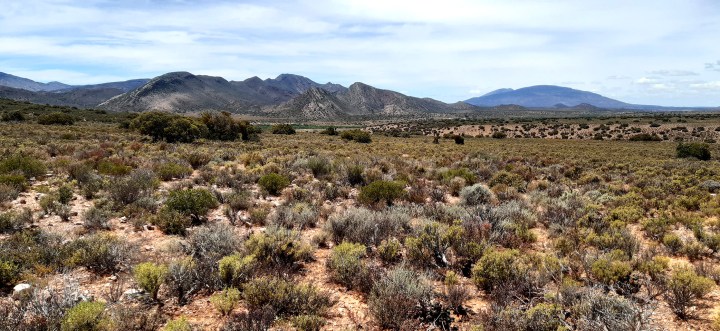
In the arid region of the Succulent Karoo in the Western Cape, what was once six private livestock farms are now in the process of transitioning into a nature reserve with the aim of protecting a number of rare and threatened endemic plant and animal species.
Spanning 16,000 hectares in the Anysberg region near Touwsriver, the six farms were initially bought for livestock farming but changing climate conditions, habitat loss, and degradation have made these areas unsuitable for this purpose with landowners unable to make a profit.
Now these six private farms — Lettas Kraal, Machaseh, Kruisrivier, Silflay, Bloutoring, and Doringkloof Karoo Plaas — form part of the provincial biodiversity stewardship programme, the Greater Anysberg Conservation Initiative which is a collaboration between the landowners, CapeNature and the Endangered Wildlife Trust (EWT).
Through this collaboration, they hope to promote a sustainable landscape in the Anysberg area using new approaches to expand the conservation areas in the Karoo and to further protect endangered and threatened species and habitats surrounding the Anysberg Nature Reserve.
News of this initiative and the intention to declare more nature reserves came to the fore after the Department of Environmental Affairs and Development Planning (DEA and DP) in the Western Cape published a notice to declare the Silflay Renosterveld Nature Reserve in Swellendam at the end of August.
Silflay was only one of six properties in the process of being declared a nature reserve as part of the Greater Anysberg Conservation Initiative, Daily Maverick learnt after making inquiries about the new reserve.
Besides being nature reserves in their own right, the farms will also serve as a buffer along the western and southern front of the Anysberg Nature Reserve — a provincial nature reserve of about 80,000 hectares in size. Anysberg Nature Reserve is also a world heritage site.
Silflay’s declaration comes after a long process and a biodiversity assessment of the site by Cape Nature which found that the intended area contains a number of biodiversity attributes that make it eligible for declaration as a reserve.
Speaking to the Daily Maverick, Cape Nature spokesperson Petro van Rhyn said that one of these attributes includes habitat for the critically endangered Riverine Rabbit, which represents an expansion of the protection levels afforded this species. The declaration of these properties will considerably increase the area under formal protection in which riverine rabbits are known to occur.
Riverine rabbit were recorded in Ansberg in 2013, and on Sanbona back in 2003. They were not known to occur in any of the formally protected areas prior to the Anysberg discovery. Anysberg was therefore the first formally protected area in South Africa on record to have them.
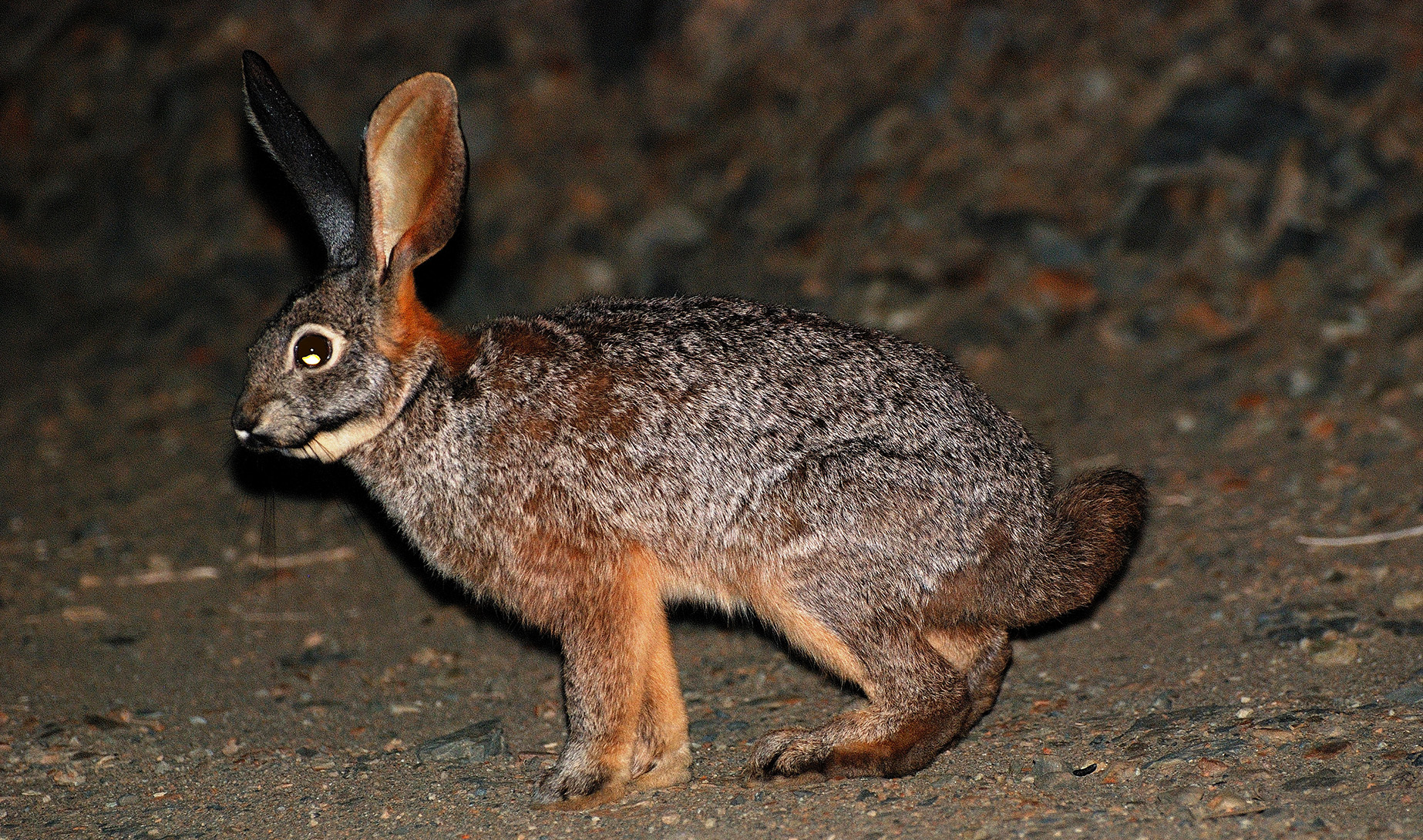
Through the Greater Anysberg Conservation Initiative, they hope to further protect endangered species and habitats in these areas, such as the critically endangered riverine rabbit, pictured above. (Photo: Keir Lynch)
In the case of Sanbona and the other properties, these are now being declared as nature reserves to increase formal protection of the areas in which riverine rabbit are known to occur.
“This is a significant achievement for riverine rabbit conservation. Further attributes are the provision of connectivity and landscape-scale ecosystem protection around the Anysberg Nature Reserve. This area is also now essentially a safe space for several species of conservation interest, such as Cape Leopard, Brown Hyena and Blue Crane. The property will be declared for the long-term protection of a range of these biodiversity attributes,” van Rhyn said.
The biodiversity site assessment is the very first step towards evaluating the biodiversity value of a site and has or will be done for each of the 6 private sites identified. The property is assessed, by CapeNature or whichever NGO may be leading the stewardship intervention (in the case of the above properties, the EWT was leading the process on the ground).
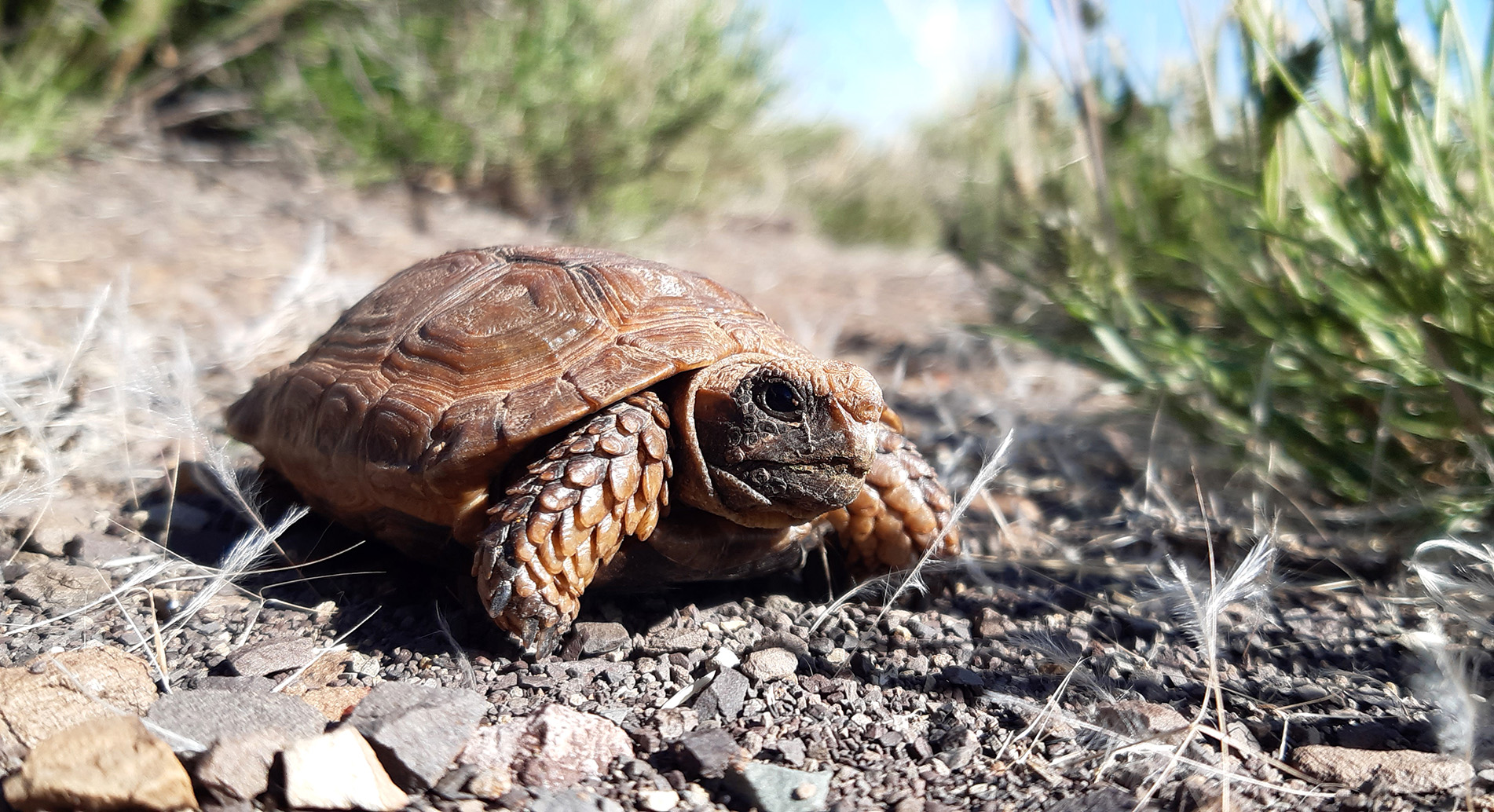
In future, these properties will be surveyed for species of conservation concern such as the endangered Karoo dwarf tortoise, pictured above which is known to occur in the Anysberg area. This is to ultimately assess how they are doing in these areas. (Photo: Endangered Wildlife Trust)
The information is then presented to CapeNature’s Protected Area Expansion Review Committee, (each province in the country follows a similar review process) to check if it is aligned with the Western Cape Protected Area Expansion Strategy. Based on the decisions made by the committee, all six properties were approved for declaration as nature reserves.
In an interview with Daily Maverick, Cobus Theron, programme manager for the Drylands Conservation Programme at the Endangered Wildlife Trust (EWT) — within which the Greater Anysberg Conservation Initiative falls — explained that biodiversity stewardship was a mechanism which enabled private landowners to commit their land towards conservation.
Once these sites are declared, they will have the same kind of status as any other Provincial Nature Reserve in South Africa, although the ownership will remain in private hands and depending on the owner, access to the public may be limited depending on what the land use and management priorities are for the property.
The properties will therefore be managed as private nature reserves going forward.
What is the Greater Conservation Anysberg Initiative?
The vision for this initiative was born 30 years ago when Johan Roodt bought Lettas Kraal, west of the Anysberg. In an interview with the Daily Maverick, Roodt said he had a vision for implementing conservation in the area after recognising its sensitive biodiversity was under threat by decades of overgrazing, poaching, sheep farming, and agricultural exploitation.
Over the years, Roodt corralled the other owners to undertake this vision and join the project. Together with the EWT and CapeNature, that vision is now being orchestrated.
Theron said, “We are doing this because these properties are important from a biodiversity perspective, and also part of our mission to secure protected areas for riverine rabbits in the southern population. There are three known regional riverine rabbit populations. The Anysberg region is home to the Southern population, and we want to protect land for the rabbits on these farms.”
The EWT and CapeNature have confirmed riverine rabbit presence on all the properties concerned.
Theron explained that the Greater Conservation Anysberg Initiative had three aims:
- To protect additional land by creating a greater conservation area bordering the Anysberg Nature Reserve to conserve the unique biodiversity of the Succulent Karoo and Fynbos Biomes.
- To investigate and apply the use of advanced technology to survey for highly elusive species, and to analyze genetic data using environmental DNA (eDNA). This is done by analyzing small amounts of soil collected in the area, and “extracting” and DNA material that is present. “We can basically see what walked there and what lived there by analyzing the soil. We are using this project to push the limits of environmental DNA research and develop it further,” said Theron.
- Exploring options to transition the area from a failed historical agricultural economy to a nature-based tourism “green” economy. As such aspects such as skills development in the tourism industry, and promoting nature-based activities are being addressed.
This work is being sponsored by Anglo American, through its Species Conservation Fund.
Bonnie Schumann, the EWT’s Nama Karoo coordinator for EWT’s Drylands Conservation Programme, said they were ultimately looking at nurturing an alternative green economy in this area to bring life back into this landscape, since the agricultural economy on its own could no longer function in that landscape.
This project also forms part of the Western Cape Protected Area Expansion Strategy for 2021 to 2025, aligned to the South African National Protected Area Expansion Strategy, the National Environmental Management: Protected Areas Act, and the CapeNature Strategic Plan 2021-2025.
“Because of their high conservation value, including the presence of several species of conservation concern, the properties will contribute to the Protected Area Expansion Strategy targets,” said Schumann.
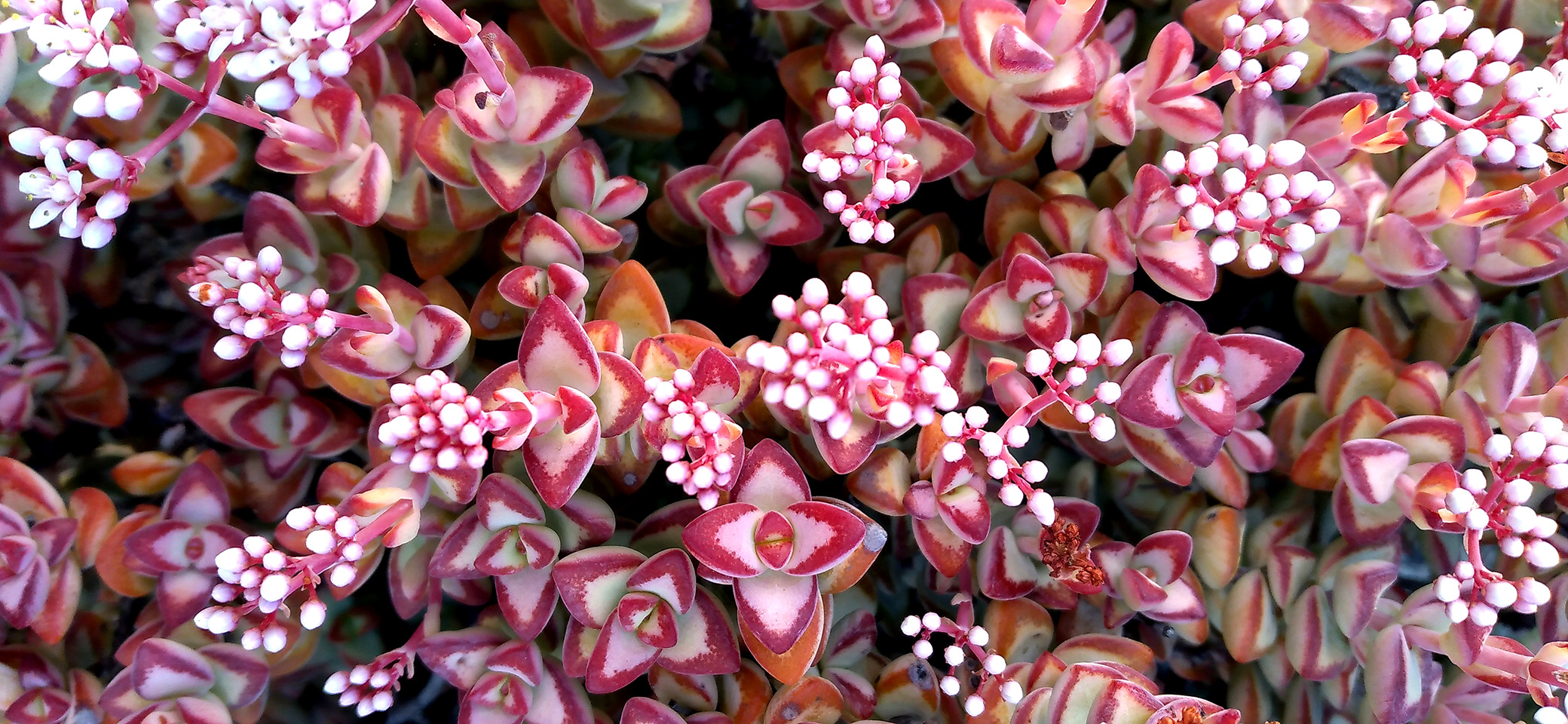
The Sosatie bos is one of the striking species found in the Succulent Karoo, the genus is the Crassula species. (Photo: Endangered Wildlife Trust)
These areas fall within those critical biodiversity areas that have been highlighted at a National and Provincial level.
Increasing protected areas at a landscape level is also important for resilience against climate change, by promoting ecosystem functioning and species survival across broad swathes of the landscape.
Van Rhyn added that this year marked 20 years of biodiversity stewardship in the province, across 73 privately owned stewardship sites totalling more than 200,000 hectares (20% of the total protected area network in the province) which have been added to the Western Cape protected area network over this period.
What the private landowners have to say about transitioning to Nature Reserves
In an interview with Daily Maverick, landowner Hilgard Bell said he took over the Bloutoring Farm in 1995 which spanned just under 5,000 hectares and was initially used for farming lucerne and sheep, but the conditions had not been conducive for livestock farming for decades.
Bell said they have seen ownership of other farms in the area constantly changing over the years with people unable to make a living.
“When we got involved we realised the veld couldn’t take the sheep but we continued with lucerne, but this became uneconomical because of the rise in electricity cost — with lucerne you have to pump the water to irrigate lucerne. We tried other projects there, trying to grow herbs for essential oils and the fragrance industry and eventually when we stopped that, we just let the veld rest,” Bell said
Bell said they make no income from the farm as it has been resting for over 25 years when they started with their own conservation activities and had a consultant come on to advise on which species there were to conserve.
“We are now about two years into the project (Greater Anysberg Conservation Initiative) and our farm has still not been declared (a nature reserve) yet, but we have concluded all the agreements and hopefully it will go through in the next few months,” he said.
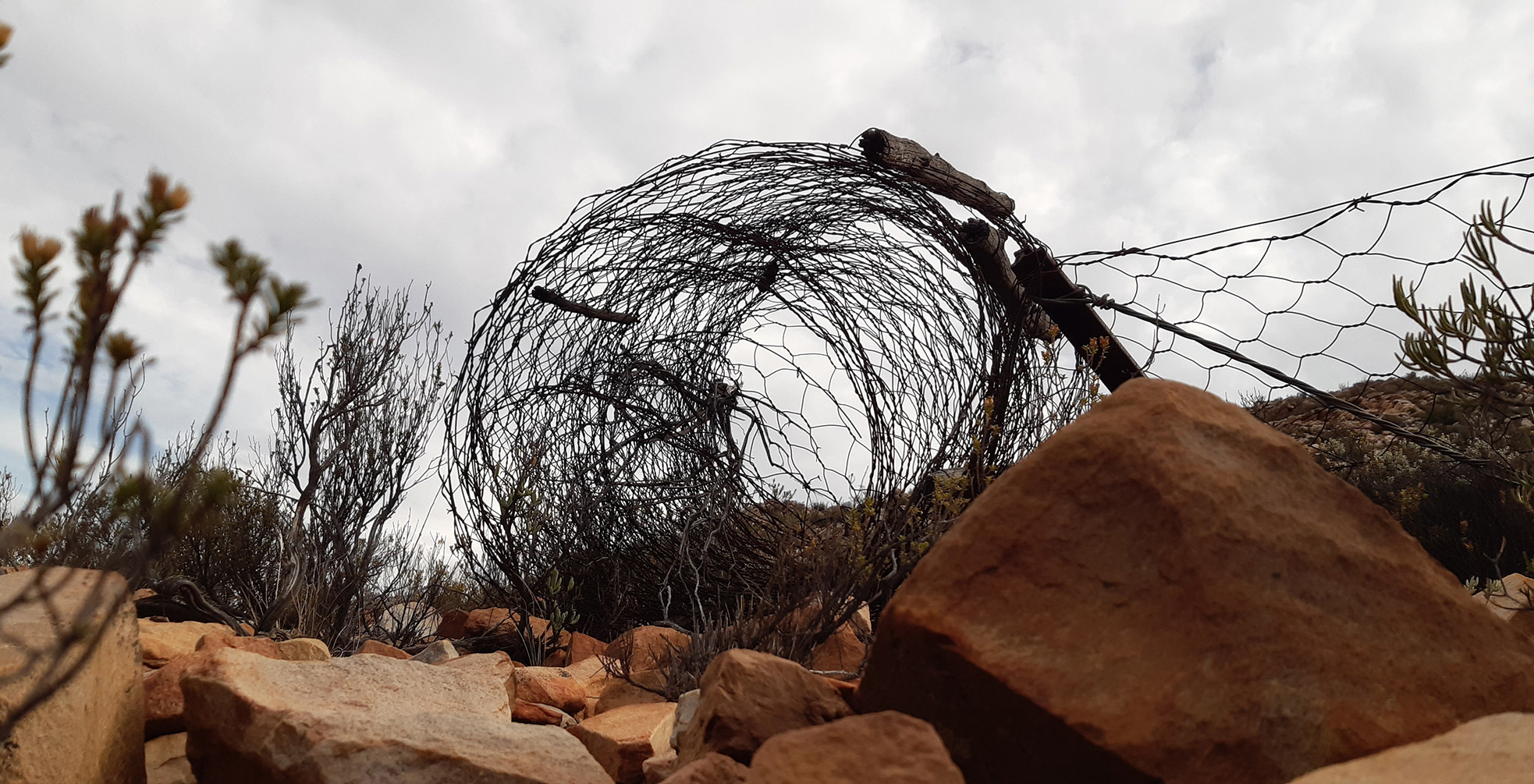
One of the internal fences being rolled up and removed at Lettas Kraal Farm in the Succulent Karoo. Taking down internal livestock camp fencing on properties is part of the Greater Anysberg Conservation Initiative in the Succulent Karoo to allow for the free movement of wildlife. (Photo: Endangered Wildlife Trust)
After this, like other landowners, Bell hopes they will be able to venture into eco-tourism and not only be able to make a living off the land again but also protect the rare and endangered species found in the region.
“We have new animals moving in and then moving out. We’ve had a recent influx of Eland for about four years and then they disappeared. They moved because with more and more people putting up game fences, their movement is restricted,” said Bell.
Ultimately, the collaborators of the Greater Anysberg Conservation Initiative hope this project will result in fences coming down to allow the free movement of game in response to environmental conditions across the landscape.
Nature conservation specialists Keir and Alouise Lynch who run their own ecological consultancy, BioNerds, are currently working with the EWT to develop a cluster management plan for four of the properties in the Anysberg area.
Through BioNerds, they look at uncovering new populations of very threatened species and then work towards the negotiation of those parcels of habitat into the Protected Area Network. Critical to this process is the development of management plans together with the landowners to ensure that the environment is managed to promote ecosystem resilience. DM



















 Become an Insider
Become an Insider
Comments - Please login in order to comment.